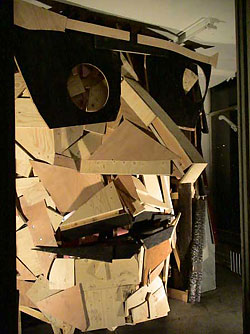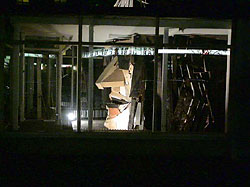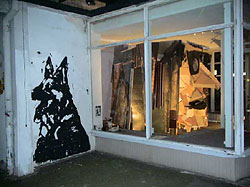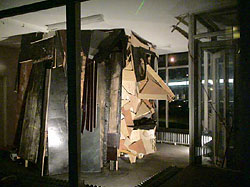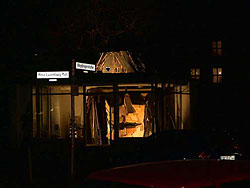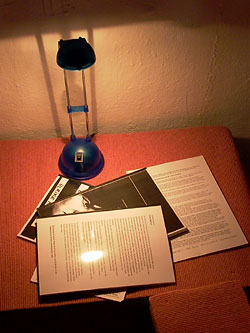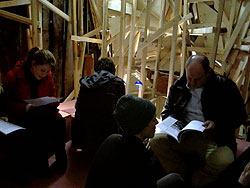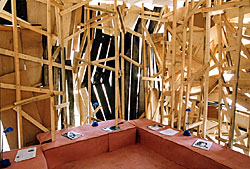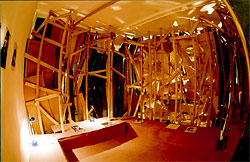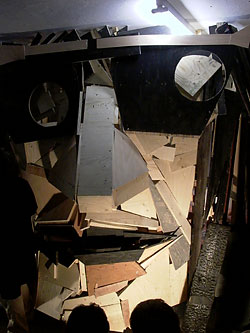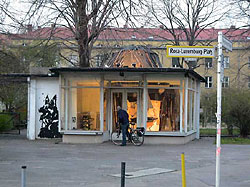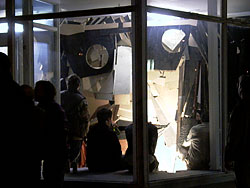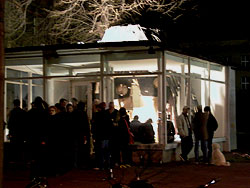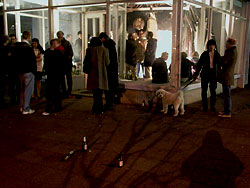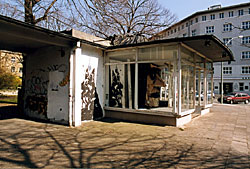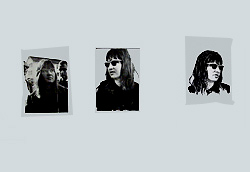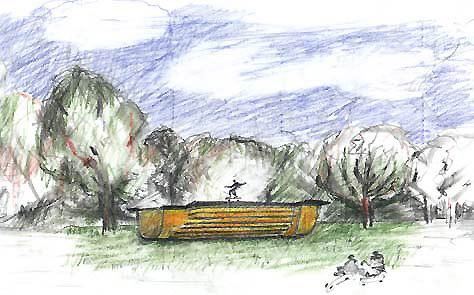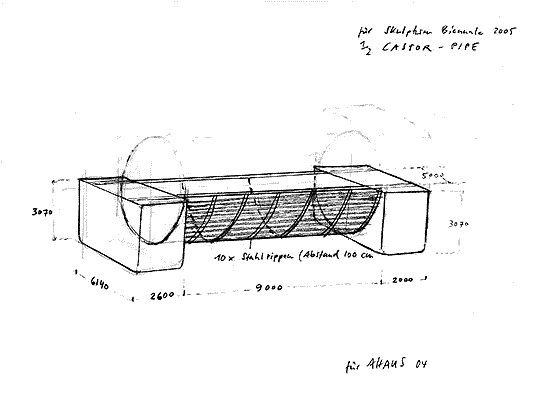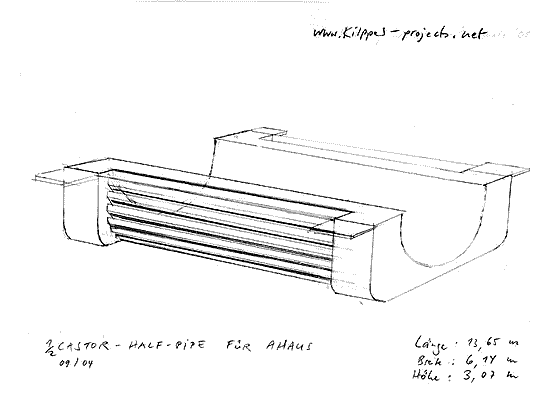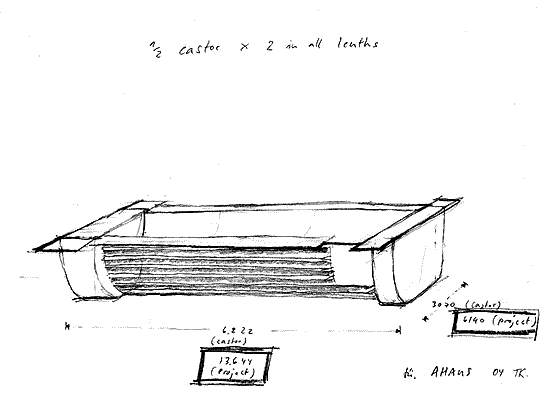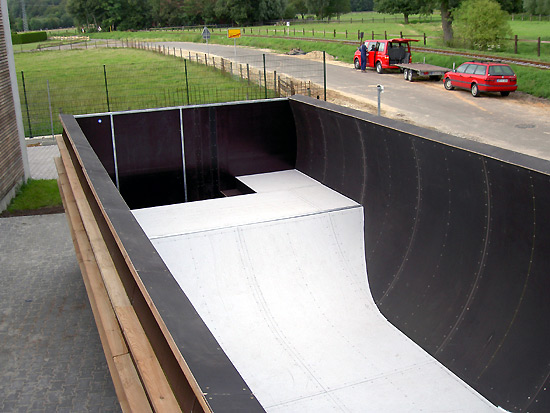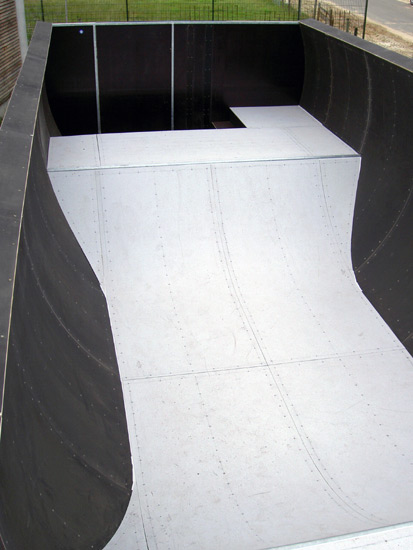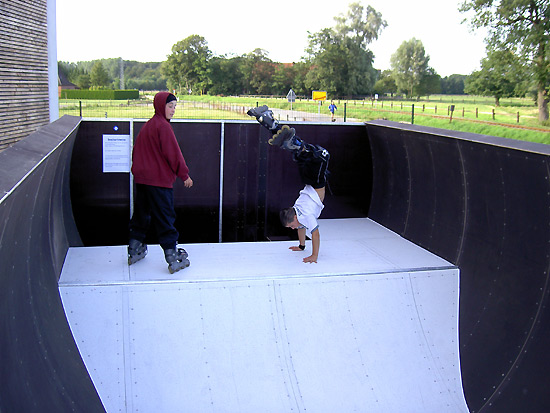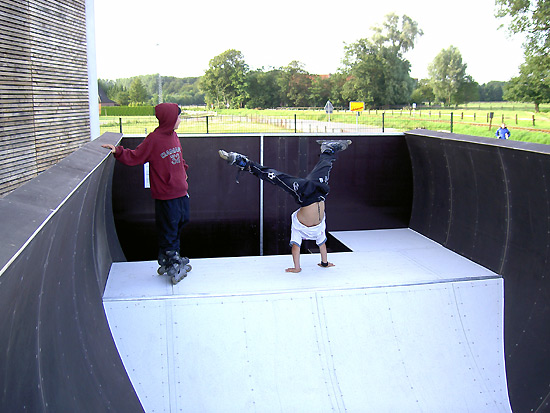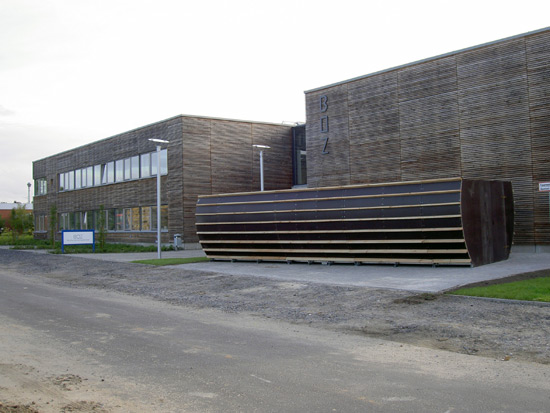March 31- May 05, 2004
Press release: thomas kilpper in the gallery meerrettich in the pavilion at the volksbühne rosa-luxemburg-platz, berlin
contact: 030 28879710 – email: info AT meerrettich.net
ulrike meinhof – exhibition from 31.03. to 09.05.04
at the pavillon am rosa-luxemburg-platz, thomas kilpper opens his exhibition with the sculpture of a larger-than-life head: ulrike meinhof on march 31, 20:00.
for almost 100 years, the pink luxury square has played a wide variety of roles under various names as a stage for political disputes and monuments. numerous demonstrations by the left, such as after the murder of pink luxembourg and karl liebknecht, but also threateningly staged marches by the Nazis began here.
in 1928 the kpd tried to erect a monument to lenin on the site of today’s pavilion.
however, the then berlin senate rejected the plan. only a few years later, the national socialists erected the horst-wessel monument there instead. for some time now, an attempt has been made to erect a monument to pink luxembourg with a work of art.
with ulrike meinhof, thomas kilpper wants to extend the specific politicization of this place into the present, but not without creating new breaks and critically questioning the stylisations and clichés that accompany it. with his sculpture, he also refers to the johann-kresnik production of the same name on the people’s stage in 1993.
ulrike meinhof stands like hardly any other personality of the west german post-war left for a long road of political confrontation with the powerful of this state, on which she radicalized herself from a critical journalist to a revolutionary underground fighter. in the 1950s, she was active as a student against the rearmament and nuclear armament of the brd, before publishing political essays for more than ten years, especially in the magazine konkret, and finally, at the height of the us war against vietnam, in 1970 she herself took up arms and co-founded the red army faction.
1972, after 2 years of large-scale search and postering on every advertising pillar, she was arrested. at times she had to spend her time in completely deserted tracts, isolated from the outside world. during the great tribal home trial, she sat in the dock with andreas baader, gudrun ensslin and jan carl raspe. shortly after she delivered an extensive speech and indictment in court against the us-American “engagement” in indochina, she was found dead in her cell on may 9, 1976. the state did not succeed in clearing up the contradictions and justified doubts about his suicide thesis and completely clarifying the circumstances of his death.
ulrike meinhof would have been 70 years old this year. after her death, her brain was removed without the consent of her relatives and kept for over a quarter of a century in laboratories of german universities for “scientific purposes”. as early as 1973, the public prosecutor’s office wanted to intervene in her brain against ulrike meinhof’s will, an intervention that could only be prevented by international publicity and criticism.
the media treatment of the “brain rape” shows the return of this old attempt to pathologize ulrike meinhof and thus the pathologization of revolutionary politics in general. in contrast, the artist sets the reality of the works, which ulrike meinhof created herself, against her texts and letters from 1960-76.
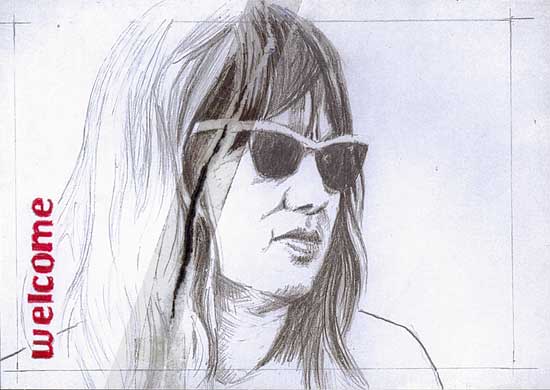
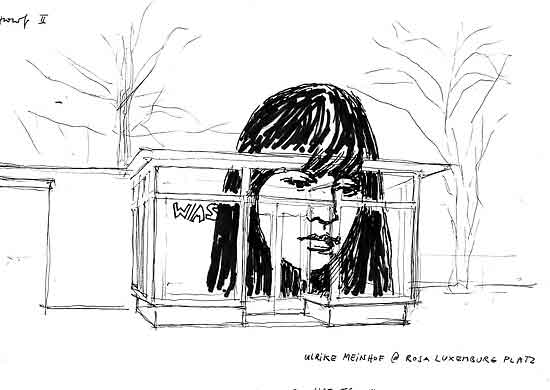
ulrike meinhof
31.03.04
ausstellungseröffnung
rosa-luxemburg-platz
berlin
